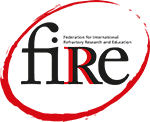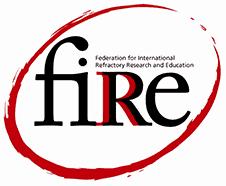The University of Orleans welcomed, from June 17 to 21 2013 the first “International Summer School” of the federation FIRE
The FIRE aims to:
• Train students (Master and PhD level) by offering educational programs coordinated between the various university centers of the network
• Provide financial assistance to students to promote international exchanges between the network partners.
• Undertake research programs involving academic and industrial experts, in order to advance basic and applied knowledge in the field of materials for high temperatures.
Content:
Thermomechanical
Professor Harald Harmuth (lectures 1 to 4)
a) Understanding refractory science – what could it mean?
(What does understanding mean in refractory science – some very common misunderstandings and errors – clarification for several relevant cases – what does it imply with respect to fundamentals necessary and heuristics?)
b) Fracture mechanics of refractories
(LEFM and the importance of deviations from it – figures-of-merit – testing procedures – fractography and structure/property relations – applications)
Professor Victor Pandolfelli (lectures 5 to 8)
Designing thermal shock resistant refractory microstructures
An in-depth view of Hasselman’s approach and other colleagues’ efforts to establish parameters that could model the thermal shock behavior; it will be also presented how all the toughening mechanisms are imbedded in these concepts. The fundamentals and first principles will be applied, as examples, to the design of complex aggregates and sintered microstructures in the following systems: Al2O3-ZrO2-MgO, Al2O3-ZrO2-TiO2, Al2O3-ZrO2-C-Ti-Si, etc, in order to provide stress induced transformation, microcracking, crack branching and in-situ whiskers.
Professor Marc Huger (lecture 9)
Multi-scale composite approach to effective thermal and mechanical properties of refractories: from grains to material level.
Analytical methods for continuum micromechanics: useful analytical bounds for prediction of effective properties of random media. Numerical approaches for continuum micromechanics: homogenization techniques. The concepts will be applied both one model refractory materials and industrial ones, with a focus on the influence of CTE mismatch between constituents.
Professor Alain Gasser (lectures 10 and 11)
Modelling and design of refractory lining masonries
Thermo-mechanical modelling and numerical simulation will be presented to improve the design of refractory structures; Non-linear mechanical behaviour: creep, compaction… Example: modelling of a ramming mix; Bases on homogenization methods; Determination of an equivalent material for masonries (with criteria of joint opening and closure); Applications to coke oven, blast furnace and steel ladle: influence of bottom lining design, influence of ramming mix initial compaction.
Thermochemical
Professor Jacques Poirier (lectures 12 and 13)
Phase transformation and corrosion of refractories
The fundamental aspects of refractories corrosion including thermochemical stability, kinetic factors, in situ and at high temperature evaluation techniques, chemical and mechanical coupled constraints will be examined.
The mechanisms of corrosion by gaseous and liquid species
In situ testing and property measurements, modeling over length scales including phase equilibrium and kinetics
Impact of corrosion on high temperature processes, identification of critical parameters
Professor Rainer Telle (lectures 14 and 15)
Phase transformation and corrosion of refractories (continued)
Wetting, infiltration
Interpretation of microstructures
Sintering phenomena and microstructural evolution in i) porous, ii) dense, iii) strongly heterogeneous materials; phenomena of liquid phase sintering
Corrosion phenomena and microstructure: infiltration, dissolution, precipitation, evaporation, condensation; damage cases.

Professor In-Ho Jung (lecture 16)
Application of FactSage thermodynamic calculations for the understanding of chemical corrosion of refractories
An overview of metallurgical thermodynamic
An introduction about FactSage and database development
Application of thermodynamic calculations for refractory research
Professor Eric Blonc (lectures 17 and 18)
Coupling effect between phase transformations and thermo-mechanical behavior
The theory background to develop a fully 3D numerical simulation accounting simultaneously for thermic, mechanics and chemistry is presented. The focus is on the coupling of the behavior of the continuous media (i.e. interaction between material and its environment) and the coupling by the boundary condition (i.e. fluid-structure). The notion of coupling scheme and the thermodynamic or irreversible process are introduced to obtain a complete framework to develop fully coupled model. Two examples will be presented: the thermo-hydro-mechanical coupling (i.e. mechanical effect of slag impregnation) and the thermo-chemo-mechanical coupling (i.e. mechanical effect of the chemical induced swelling).


